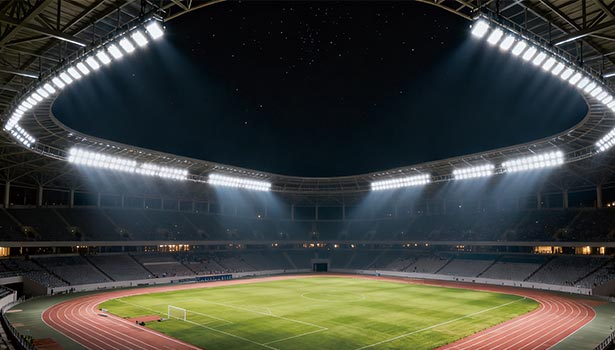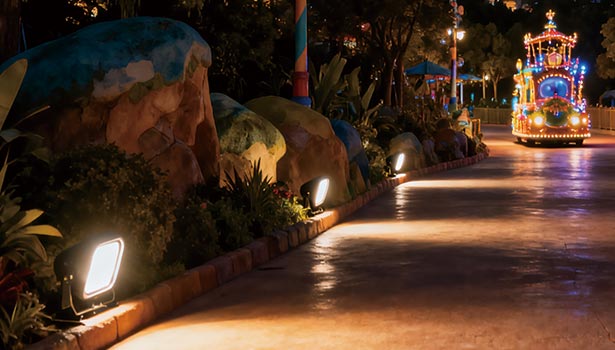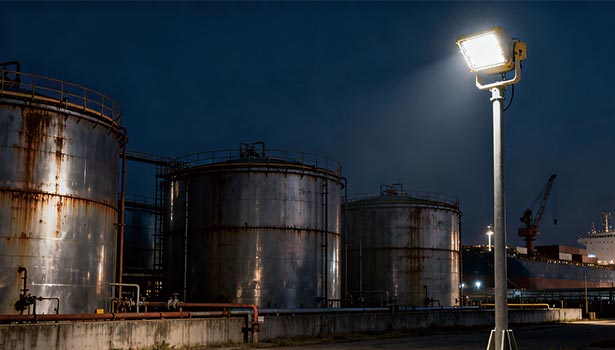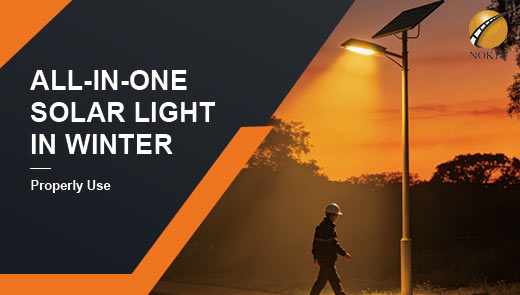Why Is It Called A Flood Light?
In night lighting scenarios, flood light has become the core choice for covering a large area of space due to its unique wide-beam design and strong illumination capability. It not only solves the vision limitation caused by darkness, but also plays a key role in security protection, landscaping, outdoor activities and other diversified scenarios, and its name “Flood Light” aptly interprets its core qualities of no-dead-angle coverage.

Understanding Flood lights: Definition and Core Characteristics
Flood lights are a type of high-intensity, wide-beam artificial lighting equipment, with the core design goal of providing even, broad light coverage for large spaces.
The characteristics of a Flood light are distinctive: High lumen output is one of its core strengths. As a unit of measurement of total visible light, the high lumen design ensures that it unleashes a powerful burst of light. The beam angle is typically between 90° and 120°, and this wide angle is a key reason for its ability to cover large areas.
In terms of durability, Flood light housings are made of rugged materials that can withstand wind, rain, dust and extreme temperatures, making them perfectly suited for long-term outdoor use. Energy efficiency is a key highlight of modern Flood lights, especially those made of LED, which consume far less energy than traditional luminaires while maintaining a high level of brightness. Flood lights are available in a wide range of sizes, from small domestic patio models to industrial grade equipment, to meet the lighting needs of different scenarios in a flexible manner.
Why They Are Called “Flood” Lights
Many people will wonder about the connection between “flood lights” and “flooding,” and the answer is that the two are related but The answer is that they are related, but they do not refer to the actual flow of water. “Flood” is a clever metaphor - like a flood spreading over a large area of land, the core function of a Flood light is to “flood” a target space with light, achieving even illumination over a large area with no visible dark corners.
The naming also clearly distinguishes it from spotlighting: Flood lighting has a wide beam (90°-120°), focusing on coverage, suitable for parking lots, stadiums and other large-area scenes; spotlighting has a narrow beam (<45°), focusing on focusing accuracy, and is suitable for highlighting specific targets such as stage performers, exhibits and so on. In short, the word “Flood light” accurately summarizes its core characteristics of large area and no dead angle, which is both intuitive and graphic.
Exploring the Different Types of Flood Lights
Different types of flood lights have their own emphasis on material, energy consumption and function, and the following is a detailed analysis of the mainstream models:
Halogen Flood Lights
The core advantage of halogen flood lights is their high brightness and color rendering, which emits a warm white light close to the natural sunlight that can truly reproduce the original color of objects. It is close to the natural sunlight, and can truly restore the true color of the object, so it is especially suitable for scenes that require color accuracy, such as landscape lighting, outdoor display, etc. However, its shortcomings are also more obvious. However, its shortcomings are also more obvious, not only relatively high energy consumption, bulb heat, and shorter service life, usually between 2000-5000 hours, long-term use of electricity and bulb replacement costs will be high.

LED Flood Lights
LED Flood Lights is the most mainstream choice on the market today, and can be called the “innovator” in the field of flood lighting. Its core advantages are focused on three aspects: energy-saving, LED flood lights than halogen lamps to save about 80% of electricity, long-term use can significantly reduce electricity costs; durability, its service life of up to 25,000-5,000 hours, almost no need for frequent replacement of light bulbs, maintenance costs are extremely low; flexibility, LED flood lights color temperature options are very rich, from warm white for domestic (2700K-3000K) to commercial or commercial lighting, the color temperature is very high.
Flexibility, LED Flood lights have a wide range of color temperatures, from warm white (2700K-3000K) for home use to cool white (5000K-6000K) for commercial or security scenarios, all of which can be selected on demand. At the same time, LED flood lights have low heat generation, strong weather resistance, and are practical and economical, making them the preferred choice for most homes and businesses.
Solar-Powered Flood Lights
The Solar-Powered Flood Lights are an environmentally friendly choice for lighting that absorbs daylight through the solar panel on top and converts the light energy into electricity stored in the built-in battery, which automatically powers the light at night. They do not need to be connected to the power grid and are flexible and easy to install, making them ideal for areas without power coverage, such as rural yards, remote trails, and field camps. The performance of modern models of solar Flood lights continues to improve, even in cloudy environments can achieve low-efficiency charging, and some of the products are also paired with a sensor function to further enhance the efficiency of energy utilization and avoid ineffective power consumption.
Motion-Activated Flood Lights
Motion-Activated Flood Lights, also known as Motion-Activated Flood Lights, are designed with the core objective of security protection, with a built-in sensor for human or object sensing, which activates the light only when it detects a movement path. The advantages of this design are outstanding. In terms of energy saving, it usually stays off and only works when needed, minimizing ineffective power consumption.
In terms of security warning, the sudden bright light can not only deter intruders, but also remind the user of abnormal movements in the vicinity in a timely manner; ease of use, without the need to manually switch, especially suitable for installation in entrances, garages, backyards, and other areas that require automatic induction lighting.
Shedding Light on the Purpose of Flood Lighting
Flood lighting has a wide range of application scenarios, from practical functions to aesthetic needs can be fully covered:
Illuminating Large Areas
In stadiums, parking lots, open-air plazas, industrial parks, and other large-area spaces, Flood lighting can provide uniform high-brightness In large spaces such as stadiums, parking lots, open squares and industrial parks, Flood lights can provide uniform, high-brightness illumination to provide sufficient visibility for personnel activities and vehicle movement, and ensure safety and convenience. For example, the soccer stadium at night, through the synergistic effect of multiple groups of high-power Flood lights, the entire stadium can be achieved without dead-angle illumination to meet the dual needs of the game competition and spectators; large parking lot Flood lighting can effectively avoid vehicle cuts and scrapes, people get lost and other issues, to enhance the experience of use.

Enhancing Security
Darkness is often a breeding ground for security risks, and Flood lights can make potential intruders have no place to hide through strong light coverage, becoming an important part of the security system. Installing Flood lights in key locations such as house facades, fences, and near store windows and doors can effectively deter thieves, trespassers, and other wrongdoers and reduce security risks. When used in conjunction with surveillance cameras, Flood lights can also ensure the clarity of the surveillance image, providing strong support for possible event tracing and further enhancing the security level.
Accentuating Architectural Features
Flood lights are also a “godsend” for outdoor aesthetic design. By adjusting different installation angles and light colors, they can make buildings and landscapes glow with a different light at night. In architectural lighting, using Flood lights to illuminate from the ground upwards highlights the contour lines and material details of the building, making historical buildings more dignified and elegant, and modern buildings more technological and futuristic. In landscape lighting, using Flood lights to illuminate trees, fountains, sculptures or flower beds in gardens can give the courtyard a clear visual effect at night, creating a warm and beautiful living atmosphere and enhancing the artistic sense of space.
Supporting Outdoor Activities
Whether it is a professional night sports event, open-air concert and other large-scale activities, or a family courtyard barbecue party, friends gathering and other private scenes, Flood lights can provide sufficient light support, so that the activities are not restricted by darkness, and extend the fun time to the fullest. For construction sites, night maintenance and other work scenes, Flood lights are indispensable tools, which can ensure that staff have a clear line of sight, effectively avoid operational errors, to protect operational safety and work efficiency.
Common Installation Methods of Flood Lights
Wall-Mounted Flood Lights
Wall-mounted is the most common household installation method, the lamps are directly fixed on the outdoor wall, ideal for lighting up the terrace, balcony, driveway, entrance door and other areas. The key point of installation is the height control, it is recommended that the lamps and lanterns are installed at a height of 2.4-3 meters (8-10 feet), this height can ensure that the light coverage is wide enough, but also can effectively reduce the generation of shadows on the ground to avoid affecting the lighting effect. At the same time, the installation location should try to choose to avoid rain, ventilation, so as to reduce the erosion of rain and moisture on the lamps and lanterns, to extend the service life of the lamps and lanterns.
Ground-Mounted Flood light
Ground-mounted Flood light, also known as plug-in Flood light, is equipped with a metal or plastic bracket, which can be directly inserted into the soil for fixing, and is mainly used for landscape lighting scenes. It is suitable for illuminating garden paths, flower beds, bushes, rockeries and other landscape elements. Its core advantage is that it is flexible and convenient to install, without complicated wiring work, and the position and irradiation angle of the lamps can be adjusted at any time according to the needs to easily realize different lighting effects, which is the ideal choice of landscape lighting for families.
Pole Mounted Flood light
Pole Mounted Flood light is suitable for large commercial or public space, the lamps are fixed on tall poles, which are commonly used in parking lots, stadiums, parks, industrial parks and other places. One of the key points of installation is the choice of pole height, which needs to be adjusted according to the size of the illuminated area, usually between 3-12 meters (10-40 feet), the larger the illuminated area, the higher the pole height required to ensure that the light evenly covers the entire area.
Secondly, it is important to ensure that the pole is firmly fixed, especially in outdoor environments, to withstand the impact of wind and other inclement weather, to avoid tipping over the lamps; in addition, pole-mounted Flood lights mostly use high-power LED lamps to ensure that long-distance, large-area lighting light intensity required to meet the lighting needs of commercial and public spaces.
From domestic courtyards to large venues, Flood lights continue to meet the lighting needs of different scenarios with a variety of types, flexible installation methods and practical functions. It is not only a practical tool to dispel the darkness, but also an important aid to enhance the safety and aesthetics of the space, becoming an indispensable lighting solution in modern life.




